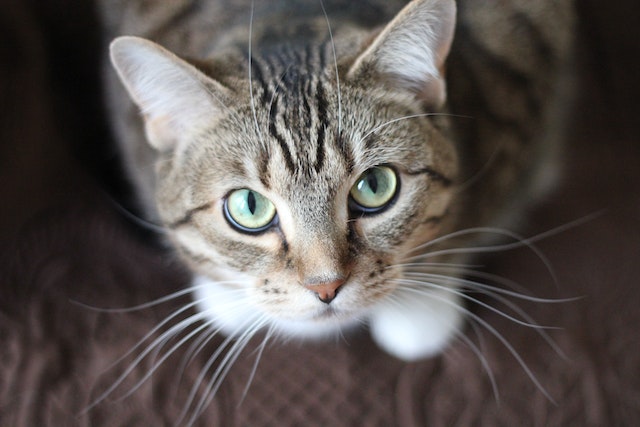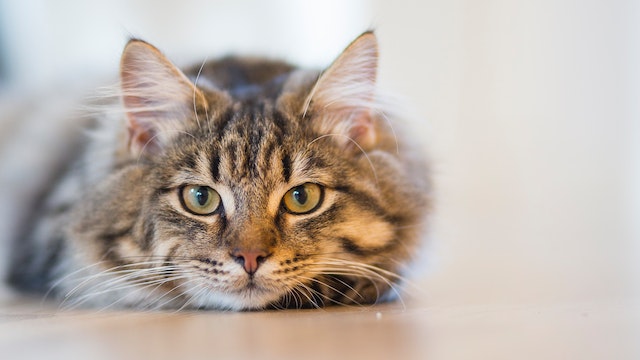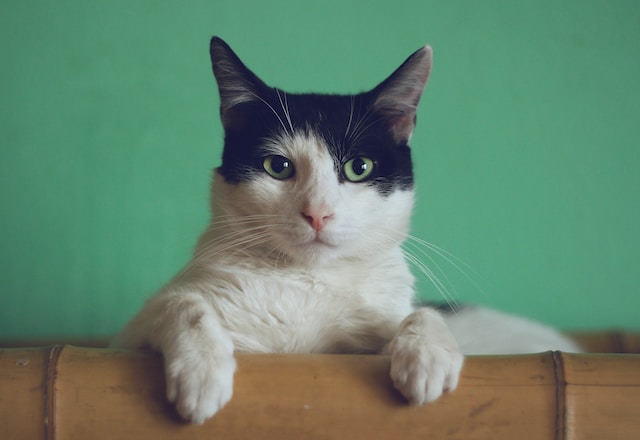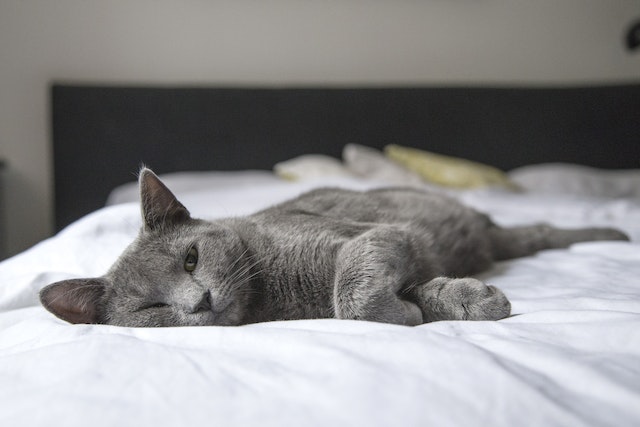Urinary Blockages in Cats
Posted: 08/13/2023 | BY: Jenna Bruce | Categories: Cat , Health problems , Pet care
What are the Causes, Prevention, and Treatment?
Guest post by Adam Parrish, BS, MLS, CVT, LVT, FFCP
Urinary blockages in cats are not uncommon and are one of the few truly dire emergencies in veterinary medicine, as a cat with a urinary blockage can become fatal extremely quickly. Urinary blockages typically occur in male cats.
In a normal circumstance, urine is produced by removing the necessary components from the blood via the kidneys. From the kidneys, this urine travels through the ureters to the bladder. The bladder isa normal holding pouch for urine, and when the animal is ready to urinate, the urine travels down the urethra and out the penis or vulva (male or female, respectively).
A urinary blockage means that a cat is unable to urinate. Typically, this means that the urethra is obstructed. The obstruction in this tube means that urine is unable to flow from the bladder and out of the body. This can lead to an overextended or overfilled bladder. If left untreated long enough, this leads to swelling and damage of the kidneys and dangerous electrolyte abnormalities, causing kidney failure and severely affecting the heart.

While bladder rupture is certainly a risk, that is not the primary concern of urinary obstructions. Acute kidney failure leading to cardiac abnormalities and arrhythmias is the more common side effect leading to a critical patient or death. Elevated electrolytes in the bloodstream affect the heart’s ability to properly pump blood to the rest of the body by affecting the muscle cells of the heart, eventually leading to the muscle fibers failing and stopping of the heart.
What Causes Urinary Blockages in Cats?
Male cats are at the highest risk for urinary blockages, and this is down to anatomy. Their urethra is much smaller in diameter than females, so it is easier and therefore more likely to become obstructed to the point of limiting urine flow from the bladder. There are two main categories of urinary blockages in cats – physical obstruction or a mechanical obstruction.
Mechanical obstruction is usually the result of urethral plugs or urinary crystals. Urethral plugs are formed from urinary tract infections, urinary crystals, stones, or cystitis, and are made up of inflammatory cells, debris, and mucus. Usually, these lodge at the very end of the urethra, close to or within the penis. Urinary crystals form from minerals in the urine that crystallize, and the most common is struvite. Most of the time, these crystals are small and pass through the urethra before becoming too large, but crystals by themselves could be large enough to cause obstruction in some extreme cases. The most common cause of urethral plugs results from an underlying condition called feline idiopathic cystitis.
A physical obstruction is based in the anatomy of the cat, without any outside influence, causing the blockage. This means that there are no crystals or other debris causing the block. Physical obstructions in the form of cancer or stricture – narrowing of the urethra – are possible but not very likely. The most common form of physical obstruction is with idiopathic swelling, meaning that there is no definitive cause, but swelling has progressed to the point that the inflammation causes the urethra to be completely closed.
What are the Signs of Urinary Blockages in Cats?
When determining if your cat may have a urinary blockage, the most common sign that most veterinarians will ask is about your cat’s litterbox usage. The most common sign of urinary obstruction is your cat straining to urinate without any or with very minimal urine production. This manifests through frequent trips to the litterbox or posturing outside of the litterbox, with minimal production at each posture. Bloody urine is also a common sign.
When a cat is unable to properly produce urine, they can develop abnormal behavior at home in addition to the litterbox. They will likely start licking their penis more often or vocalize/cry in pain/distress when trying to urinate. Additionally, lethargy and hiding are common.
If left untreated for too long, a cat can develop altered mental states, vomiting, and slowed heart rates from the electrolyte imbalances caused by the urethral blockage. At this point, cats are usually very difficult to tempt out of hiding or act extremely lethargic and painful. They may appear to be sleeping but do not rouse when they are touched.

Treatment of A Urinary Blockage
When your cat experiences a urinary blockage and is seen by a veterinarian, there are several recommended treatments, all together comprising a full care plan.
- First, the team would like to administer pain medication, as this condition can be extremely painful.
- Secondly, they should have an IV catheter placed to administer fluids and medications in preparation for a few days of hospitalization.
- Your cat will remain on aggressive fluid therapy and medications throughout their stay. These medications will be used to manage pain and inflammation, protect the heart from harmful electrolyte values, prevent nausea, and other treatments as necessary.
- Your cat will be sedated or anesthetized soon after coming into the hospital, and a urinary catheter will be placed from the penis or vulva, up the urethra, and into the bladder to relieve the obstruction and empty the blader. This urinary catheter is secured into the bladder and left in place for several days. This allows time for the urethra to heal and to dilute the urine so that there are less crystals to pass through the urethra itself. Urinary catheters usually need to be in place for about 1-3 days, depending on the severity of the case.
Typical recommendations for urinary obstructions involve treatment for approximately 1-4 days, depending on the severity. In addition to treatment for urinary obstruction, the veterinary team is also managing the kidney damage that has occurred. Luckly, treatment for kidney damage is aggressive fluid therapy – otherwise known as fluid diuresis – to dilute the harmful electrolyte and kidney values brought on by the damaged kidneys. The time spent in the hospital is used to return your cat’s blood values back to normal and to give time for the urethra to heal. Typically, your cat will be discharged from the hospital when their values have returned to normal and can urinate without the urinary catheter present.
Preparation and Prevention of Urinary Blockages in Cats
Urinary blockages are not something that can be fully prevented. Unfortunately, these are not one and done. Once a male cat has experienced a urinary obstruction, there is a high likelihood that they will have a second, third, or fourth one. This makes prevention techniques at home all the more pivotal.
How to Prevent Urinary Blockages in Cats?
Most cats that experience urinary obstructions have a history of urinary or kidney issues prior to the obstruction. When your cat first experiences urinary crystals, it is important to check with your veterinarian to see if they recommend preventative measures.
Stress plays a major role in urinary disorders such as cystitis, urethral spasms, and urinary obstruction. Reduction of stress is a major factor in preventing these urinary diseases. Stress can come from a wide range of stimuli:
- dirty litterbox
- boredom
- limited resources due to the number of cats in the house
- bullying from other cats
- out of town guests
- rearranging furniture
- renovations on the living space
To take steps to eliminate stress in the household, here are a few general guidelines:
- keep the litterbox clean
- have one more litterbox than the number of cats, and spread these around the household. This prevents fighting over resources with other cats, and gives them privacy when using the litterbox
- provide vertical spaces for habitation. Have cat perches around the living space for your cats to use, as they like being up high where they have a visual on everything around them
- one water bowl and one food bowl per cat
Proper nutrition is key to preventing urinary issues. This includes two sides, the moisture level of the food and the type of food.
Introducing additional water as a supplement to water found in a bowl increases fluid consumption. You could also accomplish this by using a wet or canned diet instead of a dry food diet, or by adding water to the dry food prior to feeding it to your cat. The water plays a critical role in the kidney’s diuresis, flushing debris, and diluting urine. Additionally, using waterfall waterers around the house may be recommended.
Many pet food brands have diets specifically formulated for cats who have urinary issues. These diets are prescription based, so you cannot purchase them without receiving a prescription from your veterinarian. They are long term diets that they will likely be on tor the rest of their life, as they help prevent and dissolve crystals and promote general bladder health by altering the pH of the urine. Since they are prescriptions, some pet insurances may cover or partially cover them. However, the diets are complete, so if you have multiple cats in the household, they can ALL be on the urinary diets, so that you do not have to feed different cats different diets.
PU Surgery
One extreme method of prevention usually is not performed unless a pet has experienced repeated urinary obstruction. This is what is called perineal urethrostomy surgery, or a PU surgery. PU surgery removes the narrowest part of the urethra, which allows urine to flow easier and have less risk of obstruction. It is not a terribly difficult operation, but it is not typically recommended unless your cat has multiple obstructions, because the procedure is also not without its risks. By opening the urethra, even if your cat experiences crystals again in the future, there will be less difficulty in passing those crystals without becoming obstructed.
How do I Prepare for a Urinary Blockage in my Cats?
When dealing with any pet emergency, the key comes down to how well you prepared prior to the emergency. Your veterinary staff does their part through years of schooling, and they want to work with you to find the best option for you. Being properly prepared is a key part of that.
- Do some research into the disease. Look into what you should be watching out for at home, that way you may catch it early without any issues.
- Have a plan in place.
- Make sure to know, or be able locate, your local ER veterinary hospital’s phone number so you can call and ask to speak with someone on the team on whether your cat should be seen, due to concern for urinary obstruction.
- Have a plan for the cost of treatment.
Unfortunately, there is no middle of the ground treatment for urinary obstruction. The blockage must be cleared under sedation or anesthesia, and your cat is likely experiencing kidney or heart issues as a result. Additionally, they are in pain. There is really no humane option for “waiting and seeing” or treating symptomatically. Either treatment is pursued, or your cat’s condition will continue to progress to the point of their heart failing or bladder rupturing.

Treating Urinary Blockages in Cats Can be Costly
Treatment for this condition ranges from $2-5k depending on the length of hospitalized stay. Make sure to have a plan in place for covering the cost of this care. Many veterinary hospitals do not permit or have options for in-house payment plans, and they have been gone for years. However, most veterinary hospitals accept multiple outside payment options that offer payment plans.
CareCredit is one option that many pet owners use or have already. This is a medical credit card that can be used for nay medical expenses, including veterinary visits. Depending on the plan you are on, these cards offer the ability to have no interest fo the first 6 months after a charge is placed on the card, allowing you to make monthly payments for 6 months without having that high interest rate hit, increasing the amount you must pay. This is something that you can apply for now, that way you have it in place for the time that you need it most. Alternatively, you can use it in place of your normal credit/debit card when paying for routine care for your pet.
ScratchPay or Allegro also work as payment plans, though these payment systems require that you already be at your veterinarian. Many times, you apply on their website directly through the veterinary clinic, and the clinic can see your application as soon as it is done through the master software they have. Applying for these require estimates of care from your veterinarian, as they are loans that help you cover the cost of care, also with low or no interest for a certain period after the experience. These are fantastic tools, but they are not something that you can prepare for care with, as their very nature requires a cost of care estimate.
Pet Insurance Can Help!
However, there is one more step that you can take to help you prepare for urinary blockages in your cats – by having pet insurance. Pet insurance allows you to feel secure that your pet is going to receive the care it needs, and you won’t be saddled with a large bill on your credit cards down the line. Pet insurances come in all shapes and sizes, for any budget or pet. Having one that covers emergency care, with a high reimbursement rate, is ideal, but you are likely going to pay more for those plans than ones that just cover primary care.
My personal recommendation to people is to pair CareCredit and high-quality pet insurance together, no matter what kind of species the pet. This is something that can be ensured ahead of time, in fact, it can be done right now! Both of these can be applied for and managed early, before you have to worry about it. Most pet insurances operate on a reimbursement model, so you still cover the cost of the care up front and receive a reimbursement to your bank account from your insurance for the portion they cover (though, there are several companies with direct-billing capability with your veterinarian). Pairing CareCredit and an insurance program allows you to pay for the care (or the majority of the care, depending on your credit limit on the card), with the CareCredit credit card, which you do not have to pay off for 6 months before accruing interest. This gives you time to receive reimbursement from a pet insurance, meaning you never have to worry about shelling out thousands on the spot on your own personal cards or out of your checking account.
Disclaimer
The information contained on this blog is intended for informational and educational purposes only and should not be construed as medical advice. It is not a substitute for professional veterinary care. Always consult with your veterinarian before making any changes to your pet's health care or treatment plan.
The authors of this blog are not veterinarians and do not claim to be experts in pet health. The information provided here is based on our own experiences and research, as well as information from reputable sources. However, we cannot guarantee the accuracy or completeness of this information.
We encourage you to do your own research and consult with your veterinarian before making any decisions about your pet's health.
Previous post
Dog Splenectomy Cost (2025)Next post
Is My Kitten Sick?Compare top pet insurance providers plans.
Enter your dog’s age in years and months to calculate their age equivalent to human years.
Calculate your dog’s ageEnter your cat’s age in years and months to calculate their age equivalent to human years.
Calculate your cat’s age
